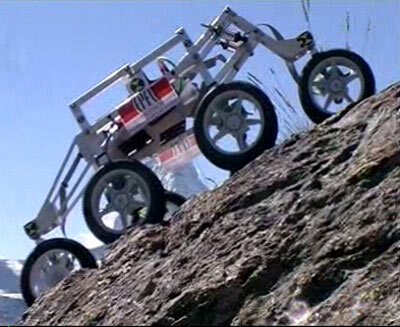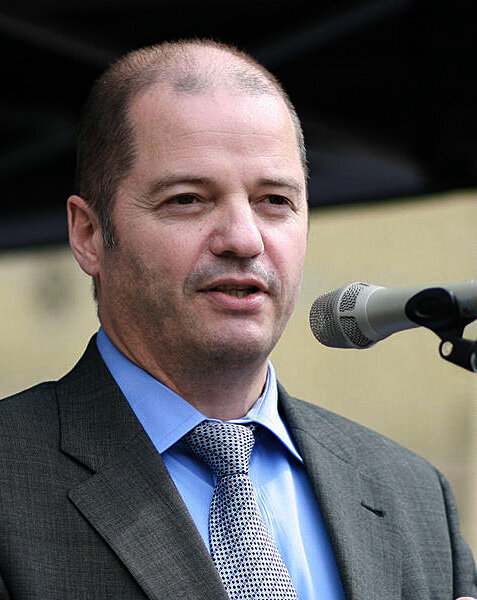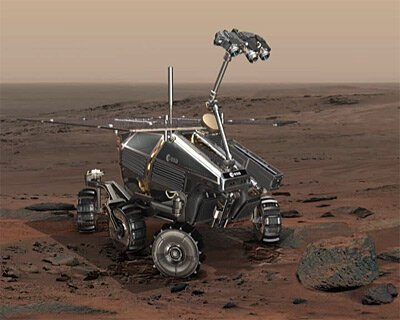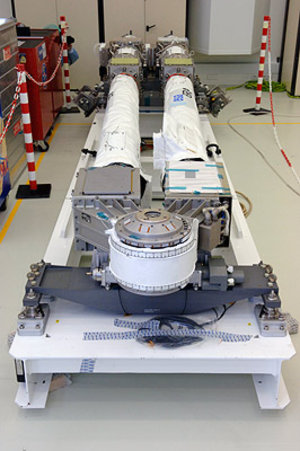Oil and gas exploration benefit from space tech
A special kind of titanium and a manufacturing technique used to build the Ariane 5 rocket could become the next successful spin-offs from Europe’s space programme, benefiting the oil and gas industry.
Together with space sensor technology that could be used in new offshore drilling tools, these exciting developments are the result of several technology demonstrator projects just completed for ESA’s Technology Transfer Programme. The wider use in the coming years of unmanned autonomous underwater vehicles in the offshore oil and gas industry calls for new technologies and advanced materials that can handle extremely harsh environments.

‘Ti6-4’ titanium is used to produce the hydrazine fuel tanks for the European Ariane 5 rocket, and when combined with the special ‘hot gas pressure forming’ technique, the result is a strong and extremely corrosion-resistant structure.. The same material and process could help in solving corrosion problems encountered in offshore underwater equipment.
Another spin-off with a big potential could come from the sensors carried by planetary landers to measure magnetic fields. This could lead to smaller sensors for oil and gas drilling tools that draw less power than those used today.
Planetary robotic technology for offshore industry

Underwater vehicles and manipulators used today in the oil and gas industry are remotely controlled by human operators. Robotic technology and techniques for docking spacecraft with millimetre-accuracy in orbit could be used to improve oil and gas exploration activities, concluded a recent study commissioned by ESA’s Technology Transfer Programme Office.
Europe’s Automated Transfer Vehicle supply spacecraft approaches and docks with the International Space Station using visual recognition and autonomous positioning, while the ExoMars rover will explore the ‘Red Planet’ without human guidance, even avoiding unforeseen obstacles.

These technologies can provide solutions for adding ‘intelligence’ to offshore oil and gas underwater vehicles to work autonomously on tasks such as mapping the sea floor and inspection of installations.
“Offshore and space activities both need innovative solutions, skilled people and technology with extreme qualities. It is therefore natural to exchange knowledge and experience across these industries,” says Odd Roger Enoksen, CEO Andøya Rocket Range and former Norwegian Minister of Petroleum and Energy.
Experts to define technology exchange

Experts from space and offshore industry will meet at the Space & Energy Seminar at ONS 2010 in Stavanger, Norway, this month to discuss how existing space technologies can help in offshore exploration, and how joint efforts can profit both.
Since its launch in 1974, the biennial ‘ONS’ event has become one of the world’s leading oil and energy meeting places. From its earlier focus on offshore technology and the Norwegian continental shelf, the event now covers the global energy industry.

“The space industry and the oil and gas industry both work at the leading edge of what is possible from technologies in extremely harsh environments,” says Callum Norrie of ESA’s Technology Transfer Programme Office.
“Both benefit when new solutions are developed for space and then transferred to solve problems in the oil and gas industry. Valuable feedback as well as further technological developments could also lead to improvements in space.”
ONS 2010 will take place in Stavanger, 24–27 August, with the Space & Energy Seminar on Wednesday 25 August.
The ‘Assessment of Robotic Technologies for Use in Oil and Gas Exploration’ study can be requested here.
Contact:
ESA Technology Transfer Programme Office
Email: ttp@esa.int
Tel: +31 71 656 6208









